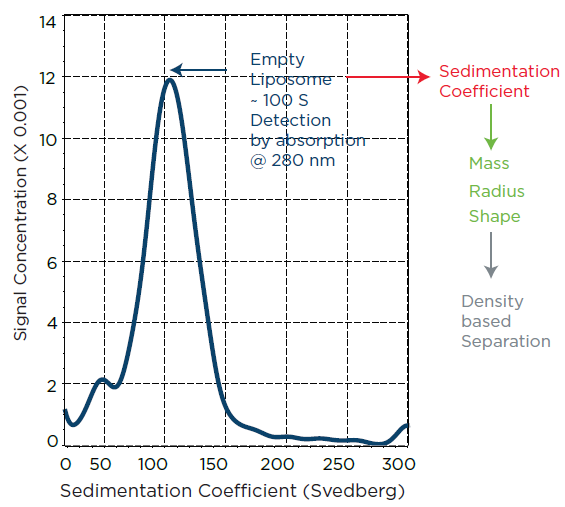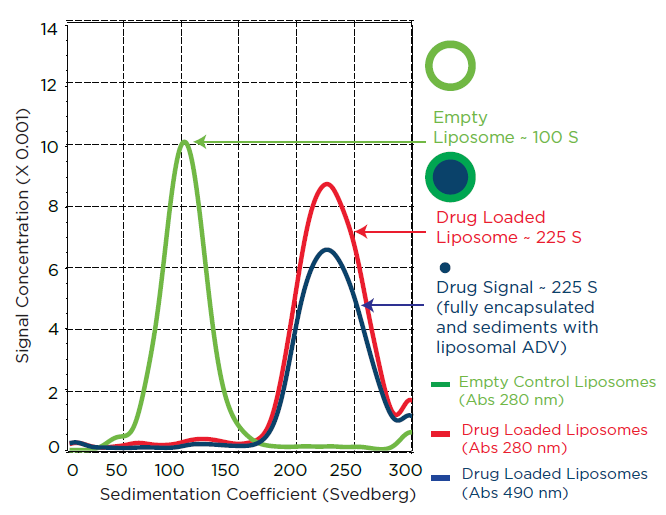How does data from AUC determine dose optimization in therapeutic liposomes?

The Therapeutic System: Small-molecule drugs can be encapsulated inside liposomes for better bioavailability, lower toxicity and targeting to specific tissues. For example: Doxoves (commercial formulation of liposomal doxyrubicin).
Doxyrubicin
The Dose Optimization Challenge:
- Distinguish between empty and loaded liposomes
- Identify free floating drug molecules in formulation
QC analysis by AUC
Density characterization is the key
Loaded vs. empty liposomes cannot be separated by size separation techniques alone – (light scattering / zeta potential) as they have the same radii. However, their masses are different.
Analytical Ultracentrifugation (AUC) is a native state technique that characterizes liposomes based on density. Sample liposomes are detected by UV-vis absorption and tracked as they sediment under centrifugation.
Tracking liposomes as well as free drug
The Optima AUC detects signal at 280 nm from liposomal bilayers as well as at 490 nm originating from drug chromophores. Thus, both empty and loaded liposomes absorb at 280 nm. Free and encapsulated drug absorbs at 490 nm. Thus, Multiwavelength absorption AUC allows you to simultaneously track the vesicles as well as the drug chromophores.
Drug Loading Efficiency from Multiwavelength AUC data
Drug Loading Efficiency is measured by:
- Fraction of loaded liposomes (~225 S, black trace) vs. empty liposomes (~100 S, green trace) – here ~87.6% loaded
- Fraction of encapsulated drug (~225 S, purple trace) vs. total drug including free floating drug, here ~88.8% encapsulated
In this experiment, all the doxorubicin drug is encapsulated and sediments within the carrier liposome at ~225 S.
Summary
Data from the Optima AUC allows you to quantitatively distinguish between empty and drug-loaded liposomes with baseline separation; it can even be used to detect the presence of unincorporated (free) drug in solution. This is important for accurate dosing and patient safety.
For research use only. Not for use in diagnostic procedures.





